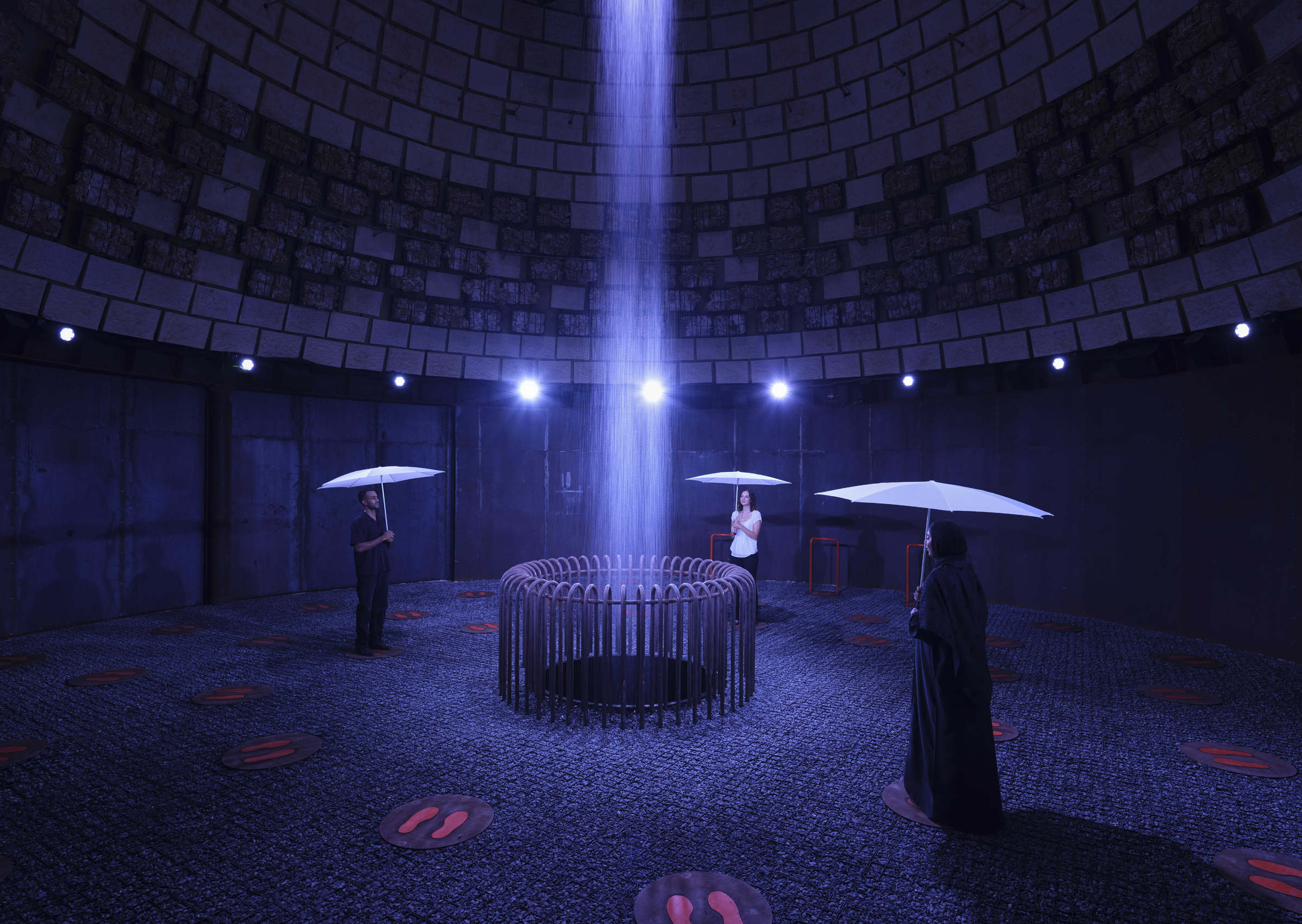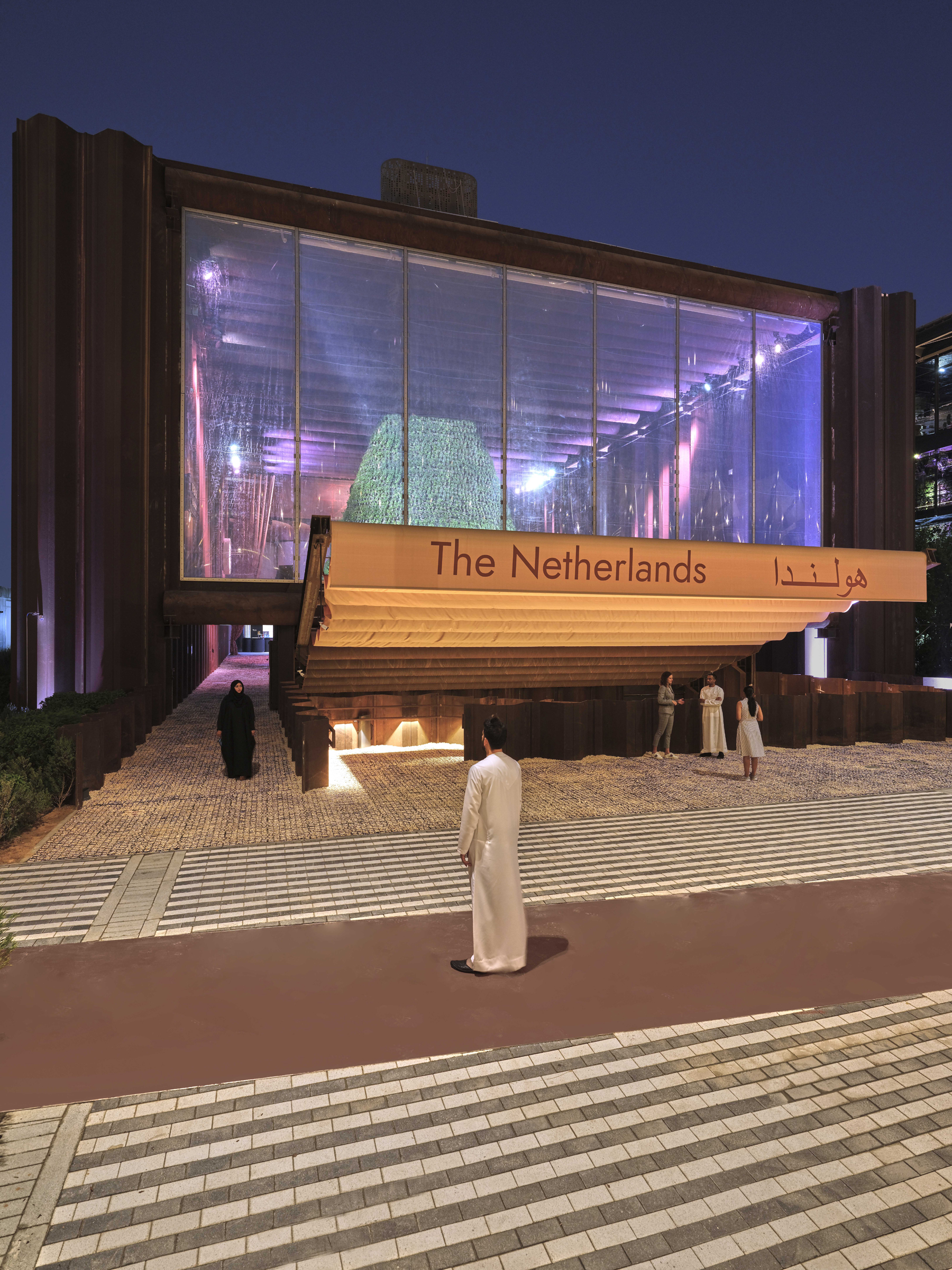Awards
‘Best Architecture & Landscape’
BIE (Bureau International des Expositions) Official Participant Awards – medium sized pavilions
‘Best Innovation that Achieves Sustainability’
UAE Innovates Awards 2022
‘Best Sustainable Initiative’
International Business Excellence Awards 2021
‘Overall winner’
International Business Excellence Awards 2021
‘Innovation & Sustainability’
Architectural Digest Design Awards 2021
ARC21 Innovation Award
(solar roofpanels Marjan van Aubel ism V8)
‘Sustainable Construction Project of the Year’
Big 5 Impact Awards 2021
‘Best Interpretation of the Theme’
Exhibitor Magazine World Expo 2020 Dubai Awards
‘Best Sustainable Design’ (runner up)
Exhibitor Magazine World Expo 2020 Dubai Awards
‘Best Medium Size Pavilion’ (runner up)
Exhibitor Magazine World Expo 2020 Dubai Awards
Netherlands pavilion at the World Expo in Dubai
It is not a building in the traditional sense, but a temporary circular climate system – a biotope – with an intense, sensory experience.
The Netherlands pavilion at EXPO 2020 epitomises the theme chosen by the Netherlands, ‘uniting water, energy and food’. It enables us to show how our country is able to link sustainable energy, water management, agriculture, and circularity. The pavilion was designed as a circular climate system, a biotope, and will soon be offering a distinctive visitor experience. It tells the story of the Netherlands participation in a way that stimulates all of the senses. Visitors can experience the underlying link between innovative Dutch solutions for water, energy, food issues. In the pavilion, water is made, energy is generated, and food is harvested.

A biotope with an intense, sensory experience


Sensory experience of the nexus between water, energy, and food
The Netherlands pavilion is markedly different to the other pavilions: That is because the pavilion itself is the exhibition and user experience. The architecture of the pavilion is a physical representation of the Netherlands’ key message at this international exhibition, namely the inextricable link between water, energy, and food. A climate system is being created using natural phenomena, such as condensation, solar energy, photosynthesis, fungus production, the degree of humidity, and temperature transmission. Water, energy, and food are harvested within this system in a circular manner.
The sensory experience of this, combined with a fantastic visitors’ show by Kossmann De Jong and BIND provides a sensational feeling of the power of nature and Dutch innovations based on nature.
Circular and bio-based
Not only has the pavilion been designed to showcase sustainability and circularity, but it has also been built with these in mind. All of the materials used will be returned or will gain another purpose at the end. This keeps the carbon footprint of the pavilion as small as possible. In contrast to the civil-engineering nature of the exterior, the interior of the pavilion adds a layer of light and refinement. The materials used in the interior are also reusable, recyclable, or biologically degradable. In this regard, it features unique innovations such as a bio-based curtain made from biopolymers, especially designed solar panels that generate energy and at the same time supply sunlight to the edible plants.
In the VIP lounge, floor tiles and acoustic wall elements have been designed and implemented using a new bio-based building material that is based on mycelium. Mycelium is the vegetative part of a fungus, that after drying forms the basis of these building products.
A typical example of Dutch civil engineering
The pavilion is actually made with the only material that can be ‘harvested’ locally in addition to sand, namely steel sheet piling. These elements are normally used to create foundation pits for skyscrapers or harbour basins, which is something we are good at in the Netherlands. We borrowed all of the construction materials, namely the sheet piling and tubular struts, from the Dutch firm Meever, that also has a branch in Dubai. At the end of Expo 2020, this material will be returned to the local construction industry so that it can be used in new projects. This enables us to keep the pavilion’s carbon footprint ultra low, and we will leave behind a clear building plot with only desert sand at the end.














- commission: Netherlands Pavilion for Expo 2020
- location: Dubai
- client: Ministry of Foreign Affairs/Netherlands Enterprise Agency
- pavilion construction and main contractor: Expomobilia AG
- interactive visitor experiences: Kossmanndejong
- Integrated installation and construction engineering: Witteveen+Bos
- circular principles and climate concept: Aardlab
- circular food system and oyster mushrooms: Sign
- design of roof lights, including PV cells: Marjan van Aubel Studio
- design of bio-textile curtain: Buro Belen
- design and production of mycelium wall and floor tiles: MOGU
- programme: exhibition space, auditorium, restaurant, VIP lounge and shop
- Floor area: 3,727m²
- design: 2018
- completion: 2021
- photographs: Jeroen Musch
